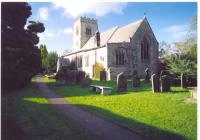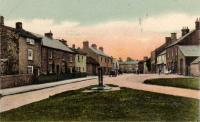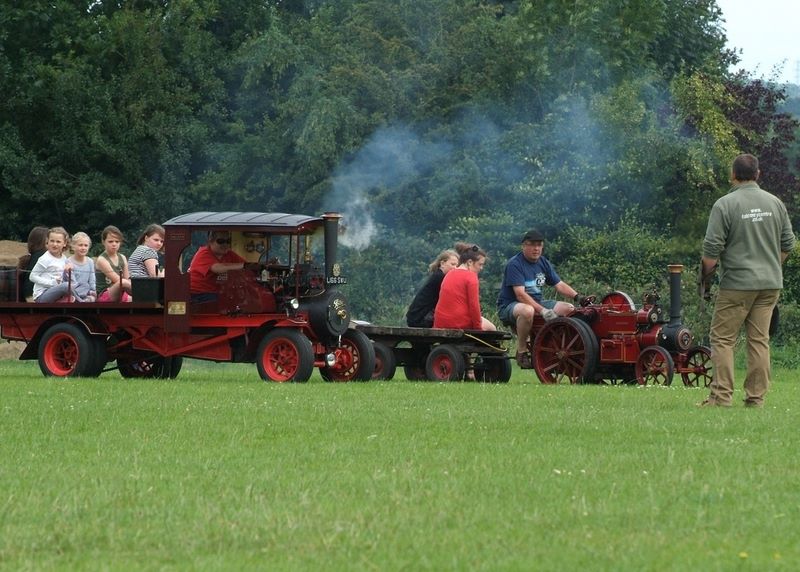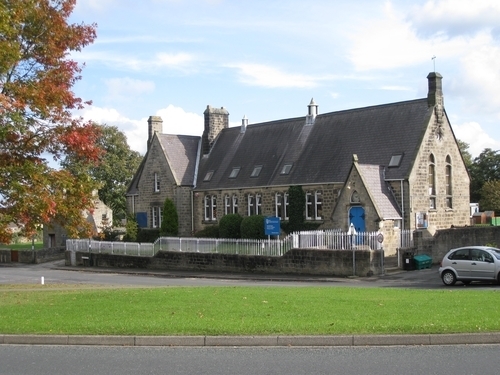Recent articles
© DT Online 2010 - 2025
| With a tunnelling company in FranceNotes for lecture given circa 1929 Of the various branches of the Services during the War few were so shrouded in mystery as the Tunnelling Companies of the Royal Engineers. Reports in the Official News Summaries referred to "mining activity" "craters" or "camouflets" being blown and "craters were consolidated" but these bare versions gave the lay reader little real information, and even the unfortunate infantry man whose services were so often requisitioned for dirty jobs such as carrying timber or explosives to the mines, or who unfortunately, often had to spend days of horror in trenches reputed to be mined and liable "to go up at any moment" knew but little of the hard working, and frequently hard cursing, miners who periodically came up, blinking and sweating, from holes in the ground, and to whom a good turn was usually repaid in candles. Early in 1915, it was known that the Germans had commenced mining operations at certain important points along the Western Front. The Royal Engineers were hastily pressed into service to countermine : but for many years mining had not been looked upon as anything more serious than a detail of the RE Training, in which neatness was very important and for which specially constructed timbers, cut to fit, were used, (Note1) The Royal Engineers were already overworked and it was realised that with the lines practically stationery, well established mining would have to be carried out on an extensive scale and would have to be offensive as well as defensive. In the summer of 1915 Sir John Norton Griffiths, the well-known Contractor and Engineer, was commissioned to organise companies of skilled miners. He did this in a very business-like way. All units were asked to forward names of all ranks with mining knowledge and experience. These men were subsequently interviewed by him and graded for transfer according to their qualifications to serve as officers, NCOs and sappers in the new companies. At the same time the age limit was raised and a recruiting campaign carried out among the colliery districts of the British Isles, and through the mining districts of the Empire. Higher rates of pay, 6/- and 2/2d per day were offered to miners according to their skill and grading as Tunnellers and Tunnellers' Mates. (Note2) By October 15, some seven or eight companies were hard at work with mixed and often inadequate equipment, and by March the following year, the number had increased to twenty-three. Each company was a unit unique in the history of the services. Among its officers the OC was usually a regular officer of the Royal Engineers with all the polish of Sandhurst or Woolwich and that vigorous mentality and alertness so distinct a feature of the Royal Engineer of pre-war days. His subordinates ranged from hard-bitten old prospectors, who had been in every gold rush in Africa, Australia or America since 1870, smart youngsters of twenty-five to thirty from the mines on the Rand and Transvaal or Rhodesia, men from copper prospects in the Urals, and a residue of mine surveyors, managers, inspectors and officials from collieries in Fifeshire, Wales, Yorkshire, Staffordshire and other home coalfields, together with a few metal miners from Cornwall and Devon. A typical company had officers as follows (Note 3):
The establishment of a Company included a CSM, CQSM and four Section Sergeants and a "Skilled trades" sergeant of the Regular RE (he would be a carpenter or fitter) plus a number of sergeants and junior NCOs - transferred miners from other branches of the services. There would also be about two hundred men, mostly miners, but including carpenters, fitters, mechanics, office staff, etc. Many of the miners were transferred from other units, mostly Infantry, or were specially enlisted miners. Among the latter were many old men (the average age of my Section was thirty-eight) often over fifty years and a few over sixty, to whom the raising of the age limit had brought great satisfaction. These men were miners; they came overseas to mine, and knew and cared little about ranks and army etiquette and only just enough about a rifle to take the bare necessary number of parades when out of the line. With different Companies the working arrangements varied but usually there were about two days in the line working eight hours on and eight hours off, and two days out of the line in which work had to be done in the timber yard etc. on one day.Tunnelling Companies knew no Divisional or Corps rests. Their work was continuous. In the Company I was with, the work carried on in this routine from the formation of the unit in April '15 to the Company's first Sports Day in June '17, broken only by a short interval in April and May '17 during the Vimy and Arras battle when the whole company was put on "forward roads" following up the advancing infantry to enable the guns to follow through. The spirit between officers and men of a Tunnelling Company was generally free from much of the ceremony and red-tape so common in any branches of the Army. Each was valued on his work and person qualities of manhood, and all had a common purpose - mining. Every officer and NCO could and did frequently take up a pick and shovel and tackle a difficult piece of hard chalk face or set a "pair of legs" in treacherous ground. Each stood his ground when the job was sticky - e.g. when a gallery, undermined and charged by the Boche, had to be charged and tamped in absolute silence. When the listeners reported danger it was for the officer or NCO to confirm their report personally and after a "blow" an officer and NCO were usually the first to don Rescue Apparatus and go below into the wrecked galleries, either to rescue or to explore. Under such conditions it is not hard to understand the mutual good feeling which prevailed between all ranks or the friendly attitude of the sixty year old miner who in billets punctiliously saluted the dapper company commander, and in talking over the work when meeting in the mines addressed him with the familiar Tyneside expression "Ye B---Ye". Such old miners were the salt of the earth. Fear they never showed, hardships they bore most cheerfully and under all circumstances their work came first. One such miner was a philosopher in his way and his attitude was typical of many. His real age was sixty-two; his army age forty-nine. He was with us at Givenchy in the winter of '15 - '16 when the line was a morass and the mines half-flooded. Rheumatism attacked him and eventually he had to report sick. He was sent down to the base from where he would probably have been discharged. In response to his pleading, however, he was not sent to hospital but after a week at the billets was allowed to return to Pont Fixe (less than quarter of a mile from the front line) and to remain there as storeman. From there he came down once a week for his change of underclothing and a bath. He rigged up quarters in an old cellar alongside another containing 15.000lbs of gun cotton, gunpowder, ammonal and ‘perdite’ with only sufficient protection to stop small shells. Here he spent much of his spare time directing traffic, runners, orderlies, visiting officers, etc., for by close observation of enemy strafing he could fairly accurately gauge the periods of safety. He was at last wounded while helping to remove some wounded men during an unexpected strafe, and had to be evacuated. Of the actual mining, interest was always maintained by the ever changing incidents of underground warfare. To the miner there were two chief forms - mud or clay mining and chalk mining. Northwards, from near Sailly-Ia-Bourse, the land was flat and low lying and consisted of clay and running sands. In winter the water level at most places was near the surface. Mining under such conditions called for close case timbering and constant pumping. Until the Summer of 1916 this had to be done by hand, later electrically driven pumps were installed and, by the use of steel tubing, shafts were sunk to greater depths. Such feats as the Messines Ridge Blow became possible. The actual face work was also very complicated in clay. The work could be done so noiselessly by push-picks that the greatest care had to be exercised in setting timber and general movements underground to avoid making any sounds that would enable the Boche to locate our galleries. Similar care was exercised by his miners and one’s first; intimation of the near presence of an enemy gallery came when it was within five to eight feet, i.e. a few hour's work. Then came the problem as to how much he knew of the presence of our gallery, followed by a hurried consultation with the infantry commander to stand by for a blow, and a hurried charging and tamping of the ground. The placing of a charge and the tamping thereof was no small feat under such circumstances. The usual size of a clay gallery was 4ft high by 2ft wide. Into this a charge varying from a few hundreds to several thousands of pounds of explosives had to be built and detonators had to be placed. This was often done simultaneously with the charging of his gallery by the Boche and then a race with death ensued with death in an unpleasant form. Under many feet of earth in a damp foetid atmosphere with dimly burning candles and in close proximity to tons of high explosive, home and honour seemed far away. The charge placed, tamping commenced. This consisted of packing earth tightly into many feet of the gallery so that the explosion would find the "Line of Least Resistance" (LLR) to be in the direction of the enemy gallery or, if only a crater was required, to the surface. Intricate formulae were used to find the 'LLR' but in many instances, after much practice, the experienced officer could decide without recourse to mathematics. While tamping progressed, moments of silence were observed at intervals to enable listening to take place. By means of the very sensitive Geophone minute sounds could be detected and located. If all enemy sounds had ceased - especially, when he had been detected preparing a charge - it was with very mixed feelings that the tamping was carried on: if however he was still at work, he could not blow for the time being and so fears were allayed to some degree. On both sides many subterfuges were adopted to arouse feelings of security in order to catch each other's workers underground. Of these, the use of dummy picks was one of the most successful until, with improved sound detectors and more highly skilled listeners, false sounds could be differentiated from real work. Of the subterfuges, the following is typical of the success achieved:
At this point what was probably the most important part of the underground work may be mentioned: that of the "listener". In the early days of mining in France listening, that is, the diagnosing of various underground sounds, the deductions based upon such sounds, and the actions resulting from these deductions, was very crude and imperfect. As time progressed its importance became paramount and careful records, not only of sounds heard, but of the work of the men who listened, were kept and filed. The average miner fell into one of several classes:
Of the "a" class men there were few, but these were invaluable: "b" men usually responded to careful training in specially constructed galleries at the various mining schools established at the "back of the Front", as did the "c" men. The "d" men, frequently very skilful men at the face-work, were at times a source of danger owing to their proclivity for misinterpreting sounds and locations, and the danger of spreading false alarms of enemy work. As mining warfare became more of a science, the use of various forms of detectors increased and less reliability was placed on "naked ear" results. Some of the earlier instruments were very crude. The writer possessed as a souvenir one such a "Listening Stick" - issued early in 1915. This consisted of a walking stick having a centre of metal running throughout its length, and a knob hand grip. It was carried about the trenches as a walking stick until required for sound detecting, and then a microphone with a projecting centre piece was attached by thrusting the projection into the knob and making contact with the metal core. The ferrule of the stick was then pushed into the ground and the miner applied his ear to the microphone, listened intently, and heard a magnified jumble of all sounds audible to the naked ear, and several that were not, was followed by one or two other types which were only indifferently useful until the French instrument - the Geophone - was adopted. This instrument, though very simple remained throughout the most reliable and trustworthy sound detector used throughout the war. By its use, sounds could be detected at great distances, their causes analysed and their location, in both direction and distance, estimated with extreme accuracy. ***************************************** My father ended his lecture at this point and what the local paper described as "a lively and prolonged discussion" followed. The lecture had been given as one of series of lectures given by invited speaker to such local people as cared to attend. In pre-TV, almost pre-radio, days these were extremely popular in rural communities. At that time Hampsthwaite was substantially a farming village with a few people in rural trades and one or two business or retried business people but with no-one with any knowledge of mining. ??In the following pages I reproduce some extracts from his field note books and "Listening Logs".?? (Note 1) (Note 2) (Note 3) The very large officer/men ratio was to support round-the-clock working with an officer underground on all faces at all times plus the need for planning, stores control, safety and rescue teams etc. Richard H. Hough With a tunnelling company in France Notes for lecture given circa 1929 |










